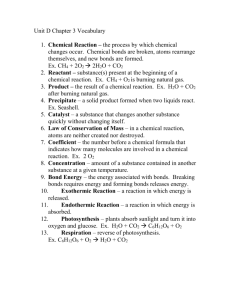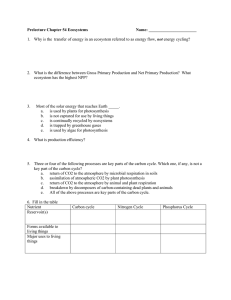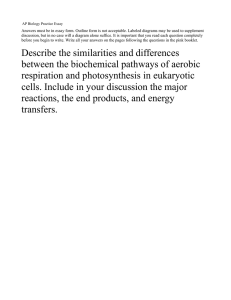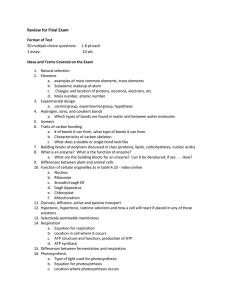chemical energy
advertisement
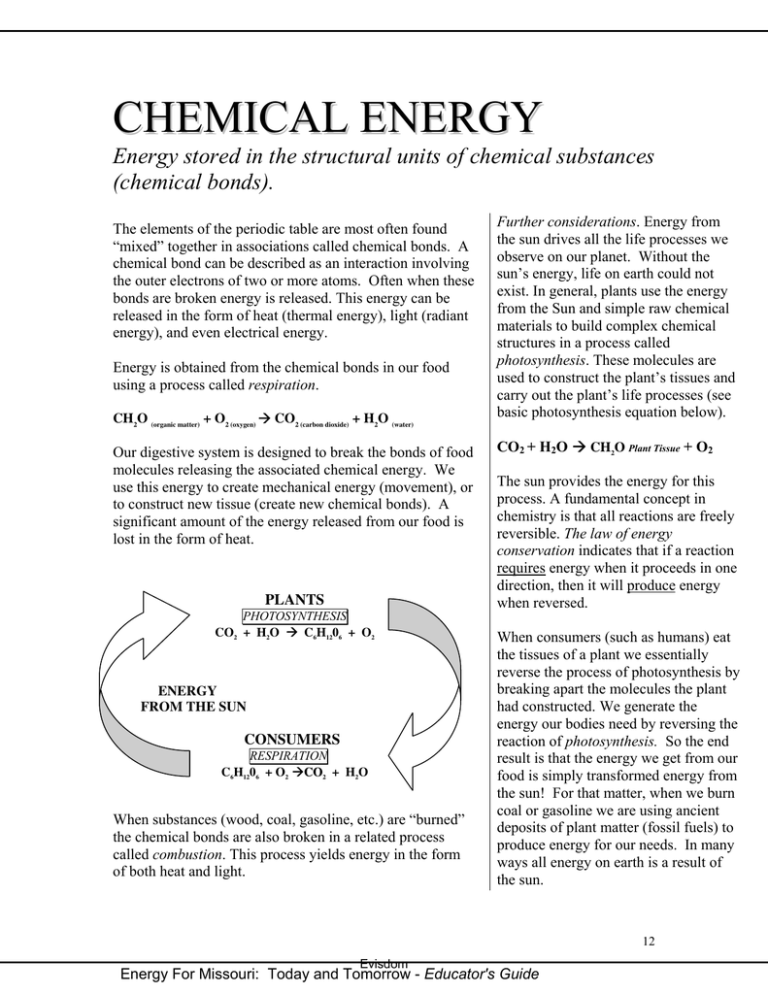
CHEMICAL ENERGY Energy stored in the structural units of chemical substances (chemical bonds). The elements of the periodic table are most often found “mixed” together in associations called chemical bonds. A chemical bond can be described as an interaction involving the outer electrons of two or more atoms. Often when these bonds are broken energy is released. This energy can be released in the form of heat (thermal energy), light (radiant energy), and even electrical energy. Energy is obtained from the chemical bonds in our food using a process called respiration. CH2O (organic matter) + O2 (oxygen) Æ CO2 (carbon dioxide) + H2O (water) Our digestive system is designed to break the bonds of food molecules releasing the associated chemical energy. We use this energy to create mechanical energy (movement), or to construct new tissue (create new chemical bonds). A significant amount of the energy released from our food is lost in the form of heat. PLANTS PHOTOSYNTHESIS CO2 + H2O Æ C6H1206 + O2 ENERGY FROM THE SUN CONSUMERS RESPIRATION C6H1206 + O2 ÆC CO2 + H2O When substances (wood, coal, gasoline, etc.) are “burned” the chemical bonds are also broken in a related process called combustion. This process yields energy in the form of both heat and light. Further considerations. Energy from the sun drives all the life processes we observe on our planet. Without the sun’s energy, life on earth could not exist. In general, plants use the energy from the Sun and simple raw chemical materials to build complex chemical structures in a process called photosynthesis. These molecules are used to construct the plant’s tissues and carry out the plant’s life processes (see basic photosynthesis equation below). CO2 + H2O Æ CH2O Plant Tissue + O2 The sun provides the energy for this process. A fundamental concept in chemistry is that all reactions are freely reversible. The law of energy conservation indicates that if a reaction requires energy when it proceeds in one direction, then it will produce energy when reversed. When consumers (such as humans) eat the tissues of a plant we essentially reverse the process of photosynthesis by breaking apart the molecules the plant had constructed. We generate the energy our bodies need by reversing the reaction of photosynthesis. So the end result is that the energy we get from our food is simply transformed energy from the sun! For that matter, when we burn coal or gasoline we are using ancient deposits of plant matter (fossil fuels) to produce energy for our needs. In many ways all energy on earth is a result of the sun. 12 Evisdom Energy For Missouri: Today and Tomorrow - Educator's Guide
